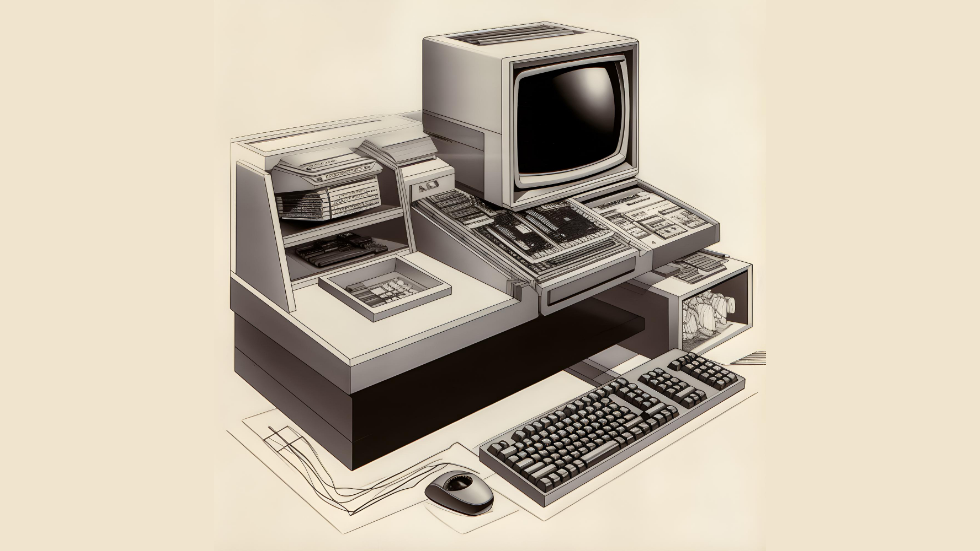Before diving into the top programming languages, let’s start with a primer on software development and programming and a brief historical overview.
What is Software Development?
Software development is the systematic process of designing, creating, testing, and maintaining computer software. It encompasses various activities, including planning, coding, testing, and deployment. The primary goal of software development is to produce high-quality software that meets user requirements and solves specific problems.
What is Programming?
Programming, often called coding or software engineering, is a fundamental aspect of software development. It involves writing, testing, and maintaining the source code instructing a computer to perform specific tasks or operations. Programmers use programming languages to communicate with computers, defining algorithms and logical structures to achieve desired outcomes.
A Brief Historical Overview
The history of software development and programming is a fascinating journey marked by significant milestones and innovations that have transformed how we interact with technology and computers. It’s a story that spans decades and has been driven by brilliant minds and a relentless quest for efficiency and automation.
- 1940s – 1950s:The roots of software development can be traced back to the early computing era when pioneers like Alan Turing and Grace Hopper laid the foundation for modern computing. Alan Turing’s theoretical concept of a universal machine, known as the Turing machine, provided a theoretical framework for computation. Grace Hopper, on the other hand, contributed significantly to the development of the first programmable digital computers. Her work on the Harvard Mark I computer and developing the first compiler marked crucial early steps in the field.
- 1960s – 1970s:The 1960s saw the emergence of high-level programming languages like Fortran, COBOL, and BASIC. These languages abstracted much of the complexity of low-level programming, making it easier for developers to write software. COBOL, for instance, was designed for business applications, while Fortran found a niche in scientific and engineering calculations. These languages not only made programming more accessible but also contributed to the standardization of software development practices.
- 1980s – 1990s:The 1980s and 1990s were pivotal decades for software development. This period witnessed the rise of personal computing, bringing computational power to households and small businesses. High-level programming languages like C and C++ gained immense popularity. With its efficient and versatile nature, C became the language of choice for system-level programming, influencing the development of operating systems like UNIX. C++, an extension of C, introduced object-oriented programming, enabling developers to build more modular and maintainable software.
Additionally, these decades saw the advent of graphical user interfaces (GUIs), changing how users interacted with computers. This shift led to the development of the World Wide Web and the birth of web browsers and the HTML language, laying the foundation for the Internet as we know it today.
- 2000s – 2010s:The turn of the century brought about significant developments in the software development landscape. Open-source software became dominant, with the Linux operating system gaining widespread popularity. The rise of dynamic programming languages like Python and Ruby, along with powerful development frameworks, revolutionized web application development. These languages focused on developer productivity, emphasizing simplicity and readability.
The proliferation of smartphones led to a boom in mobile app development. Apple’s introduction of the iOS platform and the Swift programming language in 2014 marked a pivotal moment in mobile app development. Android, with Java as its primary language, also gained prominence. Additionally, this period witnessed the expansion of cloud computing, microservices architecture, and the growing importance of cybersecurity in software development.
With this historical context in mind, let’s explore some of the top programming languages that continue to shape the software development landscape in greater detail. These languages have evolved, building upon the foundations laid by their predecessors and adapting to the ever-changing needs of the technology industry.
Best Programming Languages for Software Development
- Python: Versatile and Beginner-Friendly
Python is celebrated for its simplicity and readability, making it an excellent choice for novices and experienced developers. Its extensive standard library provides a treasure trove of pre-built modules and packages, significantly reducing development time. Python finds applications in web development, data analysis, artificial intelligence, machine learning, and scientific computing. Frameworks like Django and Flask simplify web development, while libraries like NumPy and pandas excel in data manipulation and analysis.
- JavaScript: The Backbone of the Web
JavaScript is the linchpin of web development, enabling interactive and dynamic web applications. It is pivotal in front-end (client-side) and back-end (server-side) development. Popular front-end libraries and frameworks like React, Angular, and Vue.js simplify the creation of user interfaces, while Node.js empowers developers on the server side. JavaScript’s versatility extends further into mobile app development with tools like React Native and desktop application development using Electron.
- Java: Platform Independence and Robustness
Java is renowned for its platform independence and robustness. It finds applications in enterprise-level software, Android app development, and large-scale systems. The Java Virtual Machine (JVM) enables Java code to run seamlessly on various platforms without modification. Java boasts popular frameworks like Spring and Hibernate, which streamline enterprise application development. It remains a core language for Android app development, thanks to Android Studio.
- C#: The Microsoft Powerhouse
C# is a versatile language developed by Microsoft and is highly regarded for building Windows applications and games using the Unity game engine. It’s integral to the .NET framework, making it a strong choice for Windows desktop applications and web services. With the advent of .NET Core, which evolved into .NET 5 and beyond, C# offers cross-platform capabilities, expanding its reach beyond the Windows ecosystem.
- C++: Power and Performance
C++ is a powerful and performance-focused language commonly used in system software development, game development, and high-performance applications. Its unique capability to interact closely with hardware makes it an ideal choice for tasks where speed and control are paramount. The gaming industry extensively relies on C++, with popular game engines like Unreal Engine built using this language.
Other Popular Programming Languages
- Ruby: Elegance and Productivity
Ruby is celebrated for its elegant and readable syntax, emphasizing simplicity and developer happiness. It’s the driving force behind the Ruby on Rails framework, renowned for rapid web application development. Ruby’s design philosophy prioritizes developer productivity, making it a favored choice for startups and companies seeking to create web applications quickly and efficiently. Its thriving community and ecosystem of gems (libraries) further contribute to its popularity.
- PHP: Powering the Web
PHP has been a mainstay in web development for years, fueling a substantial portion of the Internet’s dynamic content. It excels in server-side scripting and frequently pairs with databases like MySQL. PHP frameworks like Laravel and Symfony streamline web application development, while content management systems like WordPress and Drupal are constructed using PHP. Despite its detractors, PHP remains a vital language for web developers, thanks to its role in server-side scripting.
- Go (Golang): Efficiency and Simplicity
Go, or Golang is a statically typed language developed by Google, celebrated for its efficiency and simplicity. It was designed with a focus on ease of use and productivity, making it an excellent choice for building scalable, high-performance services and applications. Go’s robust standard library, support for concurrent programming, and strong emphasis on simplicity and readability contribute significantly to its popularity. It’s particularly well-suited for cloud computing, microservices, and systems programming.
- Swift: The Language of iOS and macOS
Swift is the primary language for developing iOS and macOS applications, introduced by Apple in 2014. It’s celebrated for its safety features, speed, and modern syntax. Apple’s steadfast commitment to Swift ensures its relevance and evolution in the ever-expanding mobile app development landscape. Swift’s performance improvements and developer-friendly features have made it a favorite among iOS and macOS developers, enabling them to create robust and responsive applications.
- Rust: Safety and Performance
Rust has gained rapid popularity recently due to its focus on system-level programming with an unwavering emphasis on safety and performance. It was designed to address memory safety and concurrency issues, making it an ideal choice for projects with paramount concerns. Operating systems, game engines, and web assembly are some areas where Rust has found strong adoption. Its strict compiler and ownership system ensure developers can write efficient and secure code.
Conclusion
The choice of programming language significantly impacts the outcome of a software development project. While these ten languages are among the most popular and widely used, it’s imperative to consider factors like project requirements, developer expertise, and ecosystem support when selecting. The ideal programming language for your software development endeavor will align with your specific goals and the unique demands of your project. Staying informed about the latest developments in the programming world will enable you to make well-informed decisions and remain at the forefront of the dynamic field of software development.

Zia Alizai is a dynamic force at the intersection of technology and entrepreneurship, boasting a multifaceted career spanning over a decade. With a robust background as a seasoned full-stack developer, adept application architect, and visionary product lead, Zia has consistently leveraged technology to sculpt groundbreaking solutions that catalyze business success. As a country manager for TechGenies Pakistan, he has steered the helm towards profitability while focusing on keeping startups lean and agile while excelling in developing Minimum Viable Products (MVPs).
Connect with Zia to leverage his expertise in technology and entrepreneurship and discover how he continues to shape the future of startups and innovation.





